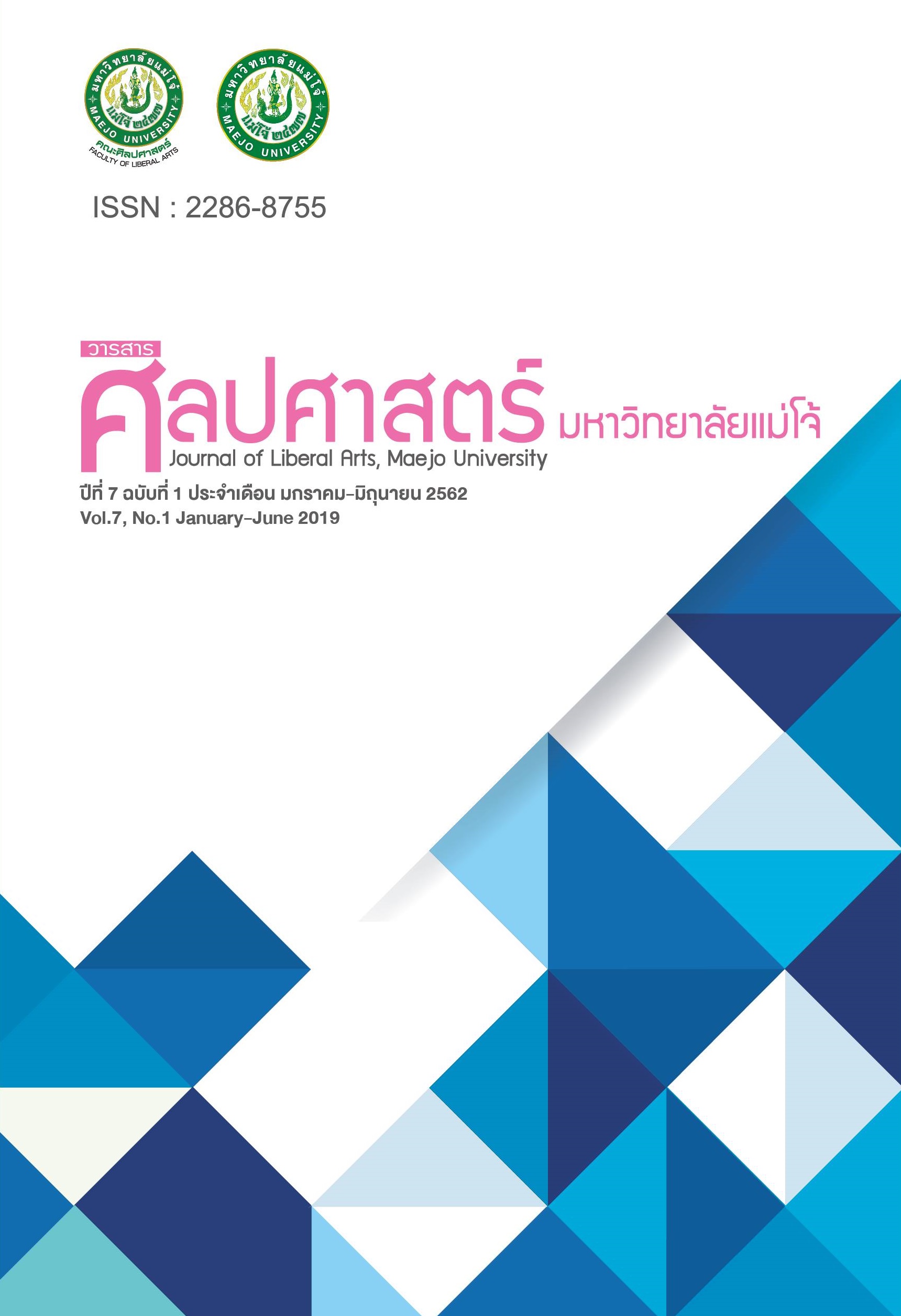The Analysis of Thai Nickname Modifiers of People of Three Age Groups in Nonsang Sub-district, Kanthararom District, Sisaket Province
Main Article Content
Abstract
This research analyzed the number of words, origins, and languages used in nickname modifiers of people of three age groups in Nonsang Sub-district, Kanthararom District, Sisaket Province. 83 nickname modifiers were obtained from interviews with 13 local people. The result of this research were presented in descriptive method with statistics, showed that among one to three word-long nickname modifiers, one word-long modifiers were used the most, followed by 2 and 3 word-long, respectively. The origins of the nickname modifiers were categorized into three groups: 1) something related to a person’s characteristics; 2) something unrelated to a person’s characteristics; and 3) something related and unrelated to a person’s characteristics. The analysis showed that group 1 is the most frequently found of the modifier origin, followed by group 2 and 3, respectively. In terms of language used in the nickname modifiers, the standard Thai language is the most frequently used language, followed by northeastern Thai dialect (Isan) and foreign languages, respectively. The findings demonstrate the cultural impact of other languages on the people in the studied area. This can be observed through the use of Isan language together with standard Thai and English in nickname modifiers.
Article Details
References
จริญญา ธรรมโชโต. (2540). การศึกษาภาษาที่ใช้ในการตั้งชื่อเล่นของคนไทยในเขตอำเภอเมือง จังหวัดตรัง (วิทยานิพนธ์ปริญญามหาบัณฑิต). กรุงเทพฯ : มหาวิทยาลัยธรรมศาสตร์.
จรูญศรี มูลสวัสดิ์. (2535). การใช้ภาษาในการตั้งชื่อของชาวล้านนาในจังหวัดเชียงราย (วิทยานิพนธ์ปริญญามหาบัณฑิต). นครปฐม : มหาวิทยาลัยมหิดล.
เทพชู ทับทอง. (2548). ต้นตระกูลไทย : ราชสกุล-นามสกุลพระราชทาน. กรุงเทพฯ : สุวีริยาสาส์น.
พรรณิดา ขันธพัทธ์. (2559). คำยืมภาษาต่างประเทศในภาษาไทใหญ่ : กรณีภาษาอังกฤษ. วารสารวิชาการมนุษยศาสตร์และสังคมศาสตร์ มหาวิทยาลัยบูรพา. 24(45), 159-175.
ราชบัณฑิตยสถาน. (2556). พจนานุกรม ฉบับราชบัณฑิตยสถาน พ.ศ. 2554. พิมพ์ครั้งที่ 2. กรุงเทพฯ : ศิริวัฒนาอินเตอร์พริ้นท์.
ศราวุธ หล่อดี. (2561). คำเรียกสีและมโนทัศน์เกี่ยวกับสีในภาษาล้านนา (วิทยานิพนธ์ปริญญาดุษฎีบัณฑิต). พะเยา : มหาวิทยาลัยพะเยา.
ศิริพร ภักดีผาสุข. (2561). ความสัมพันธ์ระหว่างภาษากับอัตลักษณ์และแนวทางการนำมาศึกษาภาษาไทย. กรุงเทพฯ : โครงการเผยแพร่ผลงานวิชาการ คณะอักษรศาสตร์ จุฬาลงกรณ์มหาวิทยาลัย.
สุวัฒนา เลี่ยมประวัติ. (2560). การแปรการใช้ศัพท์ในภาษาไทดำของคนสามระดับอายุ. วารสารศิลปศาสตร์. 17(1), 55-83.
องค์การบริหารส่วนตำบลโนนสัง. (2561). จำนวนหมู่บ้านในตำบลโนนสัง. สืบค้น 8 มีนาคม 2561, จาก http://www. nonsang.go.th/5s.php
อมรา ประสิทธิ์รัฐสินธุ์. (2522). สมมติฐานซาเพียร์-วอร์ฟ. วารสารอักษรศาสตร์. 11(2), 20-32.
อมรา ประสิทธิ์รัฐสินธุ์. (2547). วิวัฒนาการของการยืมคำและการบัญญัติศัพท์ในสังคมไทย. วารสารอักษรศาสตร์. 33(1), 185-212.
อมรา ประสิทธิ์รัฐสินธุ์. (2548). ภาษาในสังคมไทย : ความหลากหลาย การเปลี่ยนแปลง และการพัฒนา. พิมพ์ครั้งที่ 4. กรุงเทพฯ : สำนักพิมพ์แห่งจุฬาลงกรณ์มหาวิทยาลัย.
Sapir, E. (1949). The Status of Linguistics as a Science. In Mandelbaum, D. G. (Ed.), Culture, Language, and Personality : Selected Essays (p. 69). Berkeley and Los Angeles, California : University of California Press.
Whorf, B. L. (1956). An American Indian model of the universe, The relation of habitual thought and behavior to language. In Carroll, J. B. (Ed.), Language, Thought, and Reality : Selected Writings of Benjamin Lee Whorf (pp. 57-64, 135). Cambridge, Mass : M.I.T. Press.

